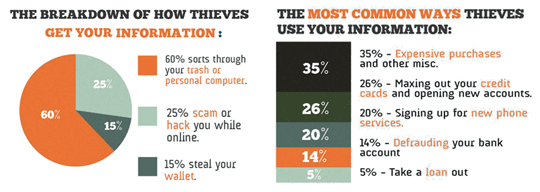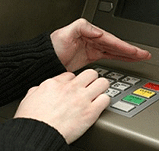Preventing Identity Theft
Identity theft (ID theft) is a form of fraud in which someone assumes another person’s identity by pretending to be that person. In recent cases, this is usually to obtain financial gain. In a study by the Financial Crimes Enforcement Network (FinCEN), it was found that cyber attacks related to ID theft have been increasing. It is also alarming to note the rising trend of ID theft by people known to the victims.
What can you make public?
To have a presence on the internet, it is inevitable that some of your personal information will be made public. The key to identity theft protection is to know what not to make public.
For example, there might be personal information about you that is freely available on telephone directories. Such information on their own is not sufficient for someone to impersonate you. The table below ranks the sensitivity of individual information types:
Low Sensitivity |
Medium Sensitivity |
High Sensitivity |
Full Name |
Date of Birth |
IC Number |
Address |
Birthplace |
Bank Account Number |
Phone Number |
Mother's Maiden Name |
Credit Card Number |
|
|
PIN or Passwords |
Source: http://www.yourcreditadvisor.com/blog/2006/10/the_ultimate_gu.html
It is important to note that criminals just need low sensitivity information and 1-2 medium/high sensitivity information to commit fraud. The simple act of safeguarding your sensitive information could go a long way in protecting yourself against ID theft.
Where’s the leak?
Part of the battle in preventing ID theft is recognising how your personal information is stolen and from where. The three main sources of ID theft are:
▪ Physical theft (stealing wallets and personal documents)
▪ Your computer (phishing, hacking) and
▪ Your discarded trash (statements of account, ATM receipts, bills).

Source: http://www.onlinemba.com/blog/identity-theft-and-password-security
How to safeguard your personal information
Here are some tips on how to prevent your personal information from falling into the wrong hands:
▪ Never provide your personal information to anyone who contacts you through a phone/email solicitation.
It is easy for a criminal to pretend he is a bank representative over the phone. If you do provide your credit card number over the phone, be certain that you are the one initiating the call.
 |
▪ Be extremely protective of your PIN numbers; memorise and do not write them down. Always be sure no one is looking over your shoulder when you are entering your PIN. Use your other hand or any other object (wallet or purse) to cover the ATM keypad when entering your PIN. |
▪ Use strong passwords.
Avoid using words or numbers that other people can easily guess. Publicly available personal information such as your car number plate or full name should never be used as a password.
▪ Secure personal information in your own home.
Avoid leaving your mail or personal documents lying around the house.
You should tear up or shred unwanted bank statements, credit card receipts, unused loan applications and any other items with personal information before throwing them into the trash.
Additional best practices
▪ Report lost or stolen credit/debit/ATM cards IMMEDIATELY.
As soon as you discover that one of your cards is missing, contact the issuing bank immediately, even if you think you may find it in a day or two. It's always better to be safe than sorry.
▪ Check your bills and bank statements as soon as they arrive.
Or if you have online access to your accounts, check them regularly. Be on the lookout for any unfamiliar charges. If you notice something suspicious, contact your bank immediately.
▪ Check your Credit Bureau Report.
Obtain a copy of your credit report periodically to check for fraudulent accounts and other information. Report all errors to the credit bureau. For more information, please visit http://www.creditbureau.com.sg/MMCreditReputation/Getmycreditreport.htm.

